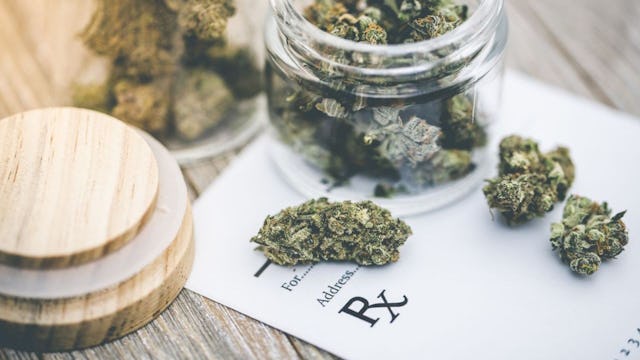States With Less Restrictive Marijuana Laws Have Lower Opioid Use

States with medical marijuana laws saw less use of opioids
Finally, something is helping reduce the opioid epidemic in America: marijuana. According to two new studies, states that have relaxed their laws on medical marijuana have seen a decrease in the use of opioids.
Opioids are a group of drugs that include heroin, fentanyl, oxycodone, hydrocodone, codeine, morphine, and various others. In a lot of cases, a person is prescribed a legal opioid for pain relief but then becomes addicted to the drug. It’s a widely documented problem in the country: 115 Americans die every day from an opioid overdose on average, according to the Centers for Disease Control. But marijuana is also a great pain reliever and has never killed anyone. Sure, you can consume too much of it and eat a disturbing amount of Cheetos, but it won’t kill you.
As the country’s opinion of marijuana has evolved so have our state laws on the drug. It’s legal in some form – medical or recreational – in at least 24 states. Which is probably why some folks have been ditching opioids for weed. “We do know that cannabis is much less risky than opiates, as far as likelihood of dependency,” W. David Bradford told NPR. “And certainly there’s no mortality risk,” explained Bradford, who is a University of Georgia public policy professor. Alongside three colleagues, he researched folks who had easier access to medical marijuana and found that they would be less likely to get prescription opioids. Their report was published this week in the JAMA Internal Medicine journal from the American Medical Association.
There’s been “substantial reductions” in opiate use in states with medical marijuana available, Bradford shared. And his group only studied one part of the country: Medicare users. The team analyzed Medicare data, which mostly includes people over the age of 65, and found a 14 percent reduction in opioid prescriptions. So that doesn’t count people using illegal opioids or folks who don’t use Medicare or large parts of the population that are under 65. Still, the researchers said medical marijuana stores – commonly called dispensaries – decreased opioid prescriptions by 3.7 million doses a day. In the states where people are allowed to grow their own medical marijuana daily doses of opioids dropped by 1.8 million.
Despite the endless horror stories opioids have caused, our nationwide use was still rising during the study period. So, the researchers’ estimated decline shows a slow down instead of a drop in total consumption, according to Bradford. Researchers also noted that they were only able to show correlation and want additional studies to be done to confirm that marijuana use is the definitive reason for the reduction in opioids use. But another study published in the same journal this week showed similar findings.
Hefei Wen, of the University of Kentucky College of Public Health, and Jason Hockenberry at Emory University, analyzed Medicaid data to see what role marijuana played in opioid use. Medicaid provides health insurance at a low cost to people and families who are economically vulnerable. Medical and recreational marijuana options “have the potential to reduce opioid prescribing for Medicaid enrollees, a segment of population with disproportionately high risk for chronic pain, opioid use disorder and opioid overdose,” Wen and Hockenberry wrote in their study. “Nevertheless, marijuana liberalization alone cannot solve the opioid epidemic.”
So while neither study includes all of the people who currently use opioids or those who are at risk of using them, both show promising possibilities for marijuana laws. But Bradford cautions us not to jump to conclusions: “Like any drug in our FDA-approved pharmacopeia, it can be misused. So I hope nobody reading our study will say ‘Oh, great, the answer to the opiate problem is just put cannabis in everybody’s medicine chest and we are good to go.'”
This article was originally published on